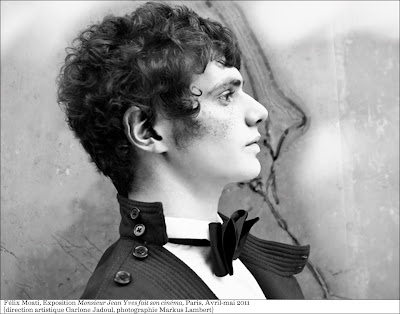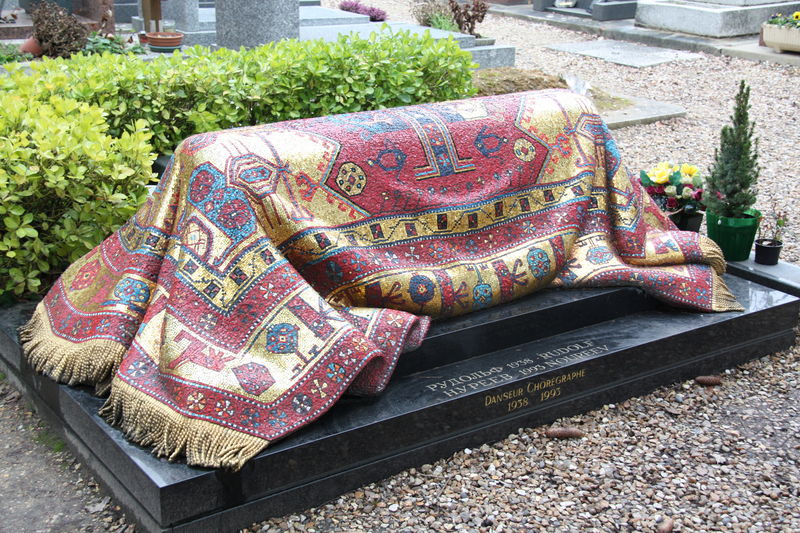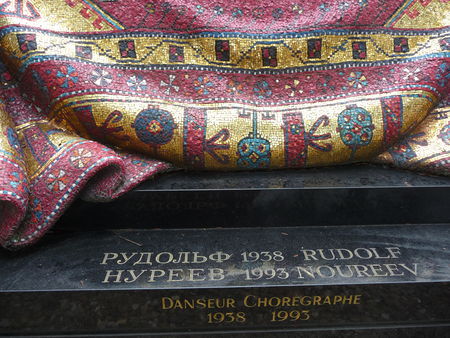 |
| photo St Tyl |
Once again the Manufacture Prelle showroom offers an enlightening look into its archives with a thematic exhibition. Twice a year, the venerable Lyon silk weaver opens its Paris showroom at the place des Victoires, making marvels of textile culture come to life by placing them in their historic and aesthetic context for an appreciative audience.
 |
| photo manufacture Prelle |
The atmosphere is hushed, heels click on the parquet that gives an occasional creak. This rarefied world of shimmering, elegant fabric is for a time inhabited by dragons, phoenixes, butterflies and cranes who roam the material's silken threads.These very creatures first came over with Japan's trade openings to the western world in the 1850s, then multiplied and were fertile in the imaginations of textile designers until the 1930s. On view are a sampling of original Japanese fabrics as well as the Prelle fabrics they inspired during the period. We might say that the woven archival documents here establish the paternity of a long line of descendants at Prelle. And what's more, the Japonisme of the mid-century was almost a second genesis for the world of arts in the West.
The current showing juxtaposes richly colored silk fabrics with Baccarat crystal and silver from Christofle in order to better communicate the rage for Japanese style in the decorative arts of the epoch. Imposing period furniture, provided by galerie Chadelaudand galerie Marc Maison, serves to vary the sensuous surfaces and complete the picture.
 |
| photo manufacture Prelle |
It was the discovery of a collection of over 150 katagami, or Japanese stencils in the archives that gave impetus for the exhibit.
 |
| photo St Tyl |
These katagami, bought by Eugène Prelle in the 1860s, were studied for elements of flora and fauna and geomtric shapes then used to inspire the manufacture's own woven silk designs. Certain designs were created by designer Eugène Prelle himself. Throughout the exhibition we can admire the framed katagami as instructive in our understanding of the derived fabrics and as beautiful objects in their own right.
 |
| Tissot c.1860 source |
The second half of the 19thcentury fell under the powerful spell of Japan. Even the Goncourt brothers succumbed; these collectors and supreme literary powers of the 19th century often expressed their fervent and exclusive devotion to the 18thcentury in matters of art and decoration and declared that they disliked any styles outside of their siècle de joli be it Greek, Medieval, Renaissance --- with one exception, the art of Japan.
 |
| Gustave Léonard de Jonghe L'admiratrice du Japon c. 1865source |
Japan's prints and decorative objects were to change the face of Western arts. At first, there was a rush to create rich and exotic interiors using imported screens, ceramics, and other art objects that were destined for boudoirsand fumoirs. All the shops for the home had at least a Japanese corner for furnishings and bric à brac and there was a proliferation of the style in French-made furnishings and objects.
 |
| George Hendrik Breitner, Girl in Red Kimono, 1893–95 source |
The owners of these objects found it fitting to wrap up in a kimono to be in harmony with their surroundings. The gradual freeing up of forms and motifs is evident in these paintings whose characters pass from observers to participants to integral parts of the whole.
 |
| Pierre Bonnard source |
 |
| Pierre Bonnard source |
Little by little, less passively, more subtly and profoundly, artists and artisans integrated not just motifs but Japanese design concepts, with their penchants for asymmetry, important negative space, and bold, flat pattern and contrasting colors.
 |
| source |
The world of textile design, despite the technical constraints of repeats developed
in a similar spirit. The stage was set for Art Nouveau, Art Deco and beyond. These concepts would influence a great part of modern art whether fine or decorative.
in a similar spirit. The stage was set for Art Nouveau, Art Deco and beyond. These concepts would influence a great part of modern art whether fine or decorative.
 |
| image source: BnF |
Highly instrumental in spreading the Japanese aesthetic was Siegfried Bing and his journal, Le Japon Artistique, published from 1888-1892. Naturally, Eugène Prelle was in possession of the journal.
Said Bing in the introduction of the first issue,
Said Bing in the introduction of the first issue,
Le seul patronage auquel cet ouvrage désire se soustraire est celui de la soi-disant 'mode' des choses du Japon, qui s'est un moment abattue sur nos salons. Elle n'a rien de commun, en effet, cette mode de clinquant, avec un art délicat, tantôt aristocratique et tantôt populaire, mais dont toujours la sobriété et la distinction constituent la loi fondamentale. Loin d'être soumis aux caprices d'un engouement frivole, cet art est désormais lié au notre d'une façon impérissable. C'est une goutte de sang qui est venu se mêler à notre sang et qu'aucun pouvoir du monde ne pourra plus en éliminer.
The only patronage which this publication wants to avoid is the so-called 'fashion' for things from Japan which has recently struck our sitting rooms. This garish fashion shares nothing, in fact, with a delicate art; it is sometimes aristocratic, sometimes common, but its fundamental law is always simplicity and distinction. Far from being subject to the whims of a frivolous fad, this art is permanently bound together with ours. It is a drop of blood now mingled with our own, which no power on earth will be able to extract.
The exhibit is on view until the 29th of March.











































.jpg)
.jpg)
.jpg)































































